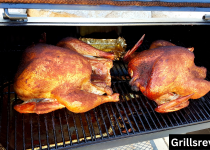Smoked Beef Jerky in Easy Steps (Huge Flavor)
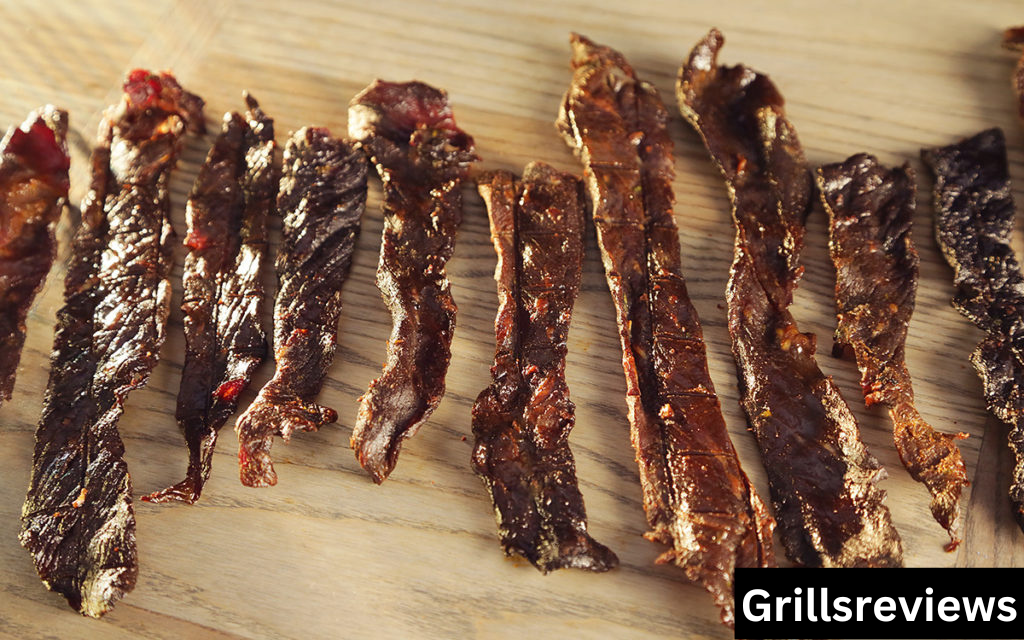
Do you need an easy recipe for smoked jerky? Look nowhere else! I’m going to show you how to create the best smoked jerky in this article.
We’ll be using beef to produce our jerky for this recipe, but there are advantages to utilizing a range of other meats as well. Check out our guide to the many meats you can use to make jerky!
Beef Jerky
Meat has long been preserved through the use of drying and/or curing techniques. A South American tribe known as the Quechua, which was formerly a part of the old Inca Empire, is the source of specific jerky.
The name comes from “ch’arki,” which means “to burn” in Native American. Thankfully, we won’t be burning any flesh today, but we will be drying the meat using comparable methods.
The smoker, in my opinion, is the ideal method for making beef jerky, but I’ve added a contemporary touch that makes it a bit simpler.
In addition to being a fantastic snack, this jerky also makes a fantastic homemade gift.
How to Make Smoked Beef Jerky
You should purchase top round, bottom round, lifter, or pectoral cuts while producing jerky. However, these aren’t the only kinds of meat you may use; any lean, flavorful cut of beef can be turned into mouthwatering jerky. The top round will be used in this recipe.
Read on to learn all we’ve learned about producing beef jerky from every type of meat you can think of over the years, including which cuts of meat work best.
What Cut of Beef Should Be Used for Smoked Beef Jerky?
No matter what kind of cut you plan to buy for preparing homemade beef jerky, there are a few qualities you should look for in the meat, including:
Amount of Fat
Marbling
Cost
The meat’s amount of fat
Although a large steak on the grill may favor fatty flesh, beef jerky calls for the exact opposite. One of the main reasons why so many people manufacture beef jerky in the first place is that the fat in meat never completely dehydrates; therefore, fatty meat that is dried might degrade rather rapidly.
If you want to produce beef jerky that will survive a long time, you should search for slimmer cuts of meat when you go shopping for meat to make beef jerky, such as flank steak or lighter cuts. You generally don’t need to worry too much about choosing the thinner cuts if you consume all of your jerky in one or two days.
Marbling
Although you don’t want too much fat in the meat cut used to make beef jerky, you do want some, especially the marbling or intramuscular fat that is found in the muscles. You can rely on your jerky to be soft and tasty because of the intramuscular fat.
Lifter and pectoral cuts contain sufficient marbling to produce a batch of tender beef jerky. Although it is more expensive, flank steak also has some marbling that may create good, soft jerky.
Cost
Making beef jerky can be pricey, speaking of greater expenditures. As a result, many experienced jerky producers need to strike a compromise between the quantity of fat they desire in the meat and the cost per pound.
While you are first starting out, it is best to choose a less costly kind, like a pectoral cut, rather than using a more expensive cut while making beef jerky for a particular event. In this manner, you won’t lose a costly piece of meat if your first or second attempt is unsuccessful.
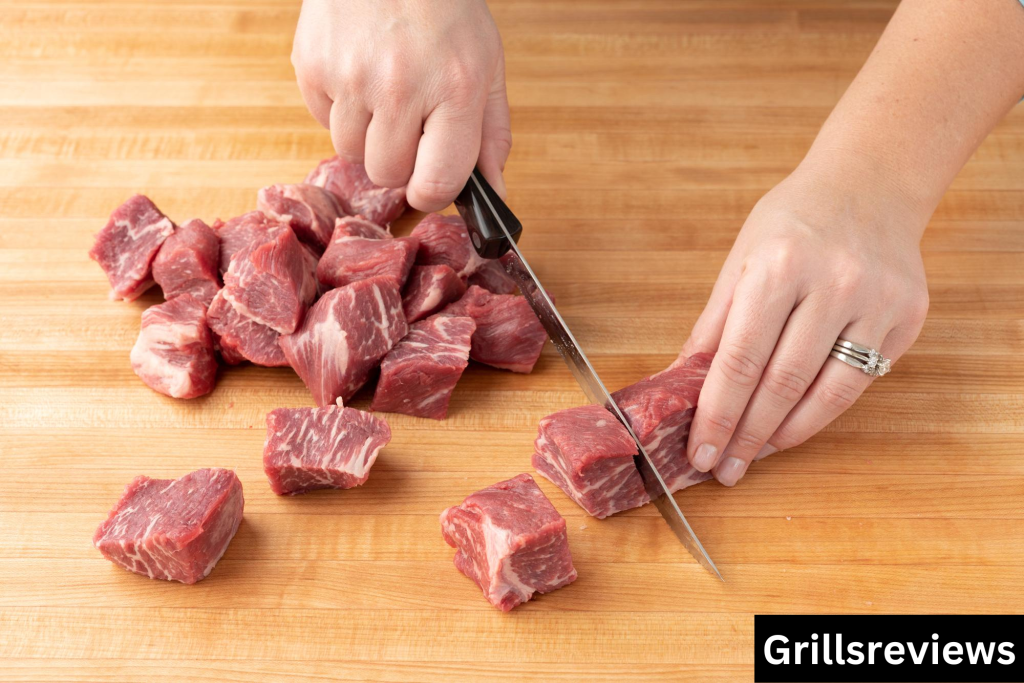
Making Your Own Beef Jerky
I’ll go over the whole procedure I use to smoke my own beef jerky. The merits of smoking jerky versus dehydrating it are hotly contested.
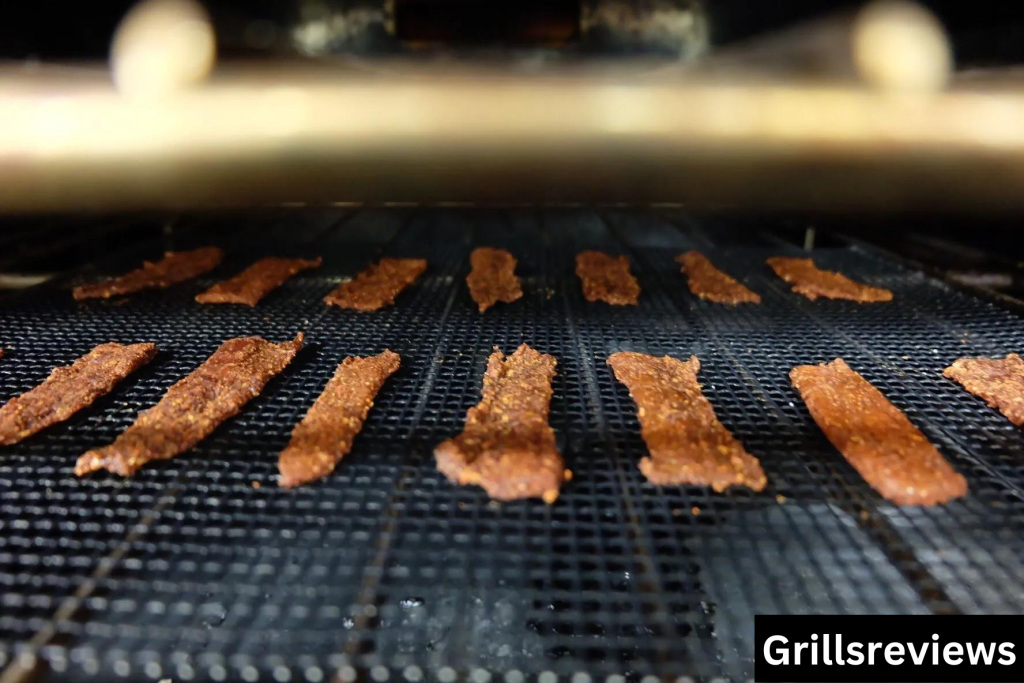
I enjoy doing both!
I begin the procedure on the smoker to add more flavor, then I dehydrate my jerky to the desired consistency. If you don’t have a smoker, you may make everything in a dehydrator.
What You’ll Require
A smoker
A dehydrator
A large plastic bowl
A sharp knife
Ingredients for marinade
Smoking Wood
Selected protein
What temperature is ideal for smoking beef jerky?
Beef jerky should be smoked at a temperature between 160 °F and 180 °F. The meat might dehydrate as a result of not being cooked. Up to 200 °F, you should be fine, but any higher temperatures might cause your jerky to dry up.
Making Your Beef Jerky Marinade
We’ll be using a straightforward marinade for our smoked beef jerky because we’ve discovered that it perfectly enhances the smoke flavor. Ingredients for the quick and simple jerky marinade are as follows:
1/2 cup soy sauce
1/2 cup Worcestershire sauce
1/2 cup brown sugar
1/2 tbsp. Paprika
1 tsp. Salt
1 tsp. Black pepper
Preparing Your Beef
The most crucial step is to cut your protein against the grain. This will guarantee that your finished jerky is chewable without being overly harsh. The thing with jerky is that when it’s made properly, it should actually be a little mushy and yield when you bite into it.
It shouldn’t be pulled with your teeth, like a very chewy toffee. If you cut across the grain, your jerky will be stringy, rough, and extremely chewy. And while it will still taste delicious, you’ll work your jaw a lot!
I prefer to slice my jerky about half an inch thick and approximately a third of an inch broad. To put it another way, the grain of your slice should go from left to right (or right to left).
After cutting up all of your protein, combine it with the marinade you’ve made, cover the bowl with plastic wrap, and refrigerate overnight.
Smoking Your Beef Jerky
We recommend that you maintain this temperature between 175 degrees and 180 degrees Fahrenheit to get our beef jerky to a safe internal temperature while also dehydrating it at a steady rate before you begin smoking your beef jerky.
The meat will be cooked and burned if you smoke it at a high temperature. If it’s too low, the moisture won’t be efficiently removed. Unless you want to stay up all night watching your smoker, my preferred range is 140 to 160 °F.
Electric smokers are popular with home jerky producers since some smokers find it difficult to reach these low temperatures.
I have a number of time-consuming, but one is also rather hands-off, techniques for making jerky. Either technique will yield really fantastic jerky.
How to Store Smoked Jerky
Place the jerky on a rack to cool when it has finished smoking. Place the beef in a zip-top bag or other airtight container once it has cooled to room temperature, and then put it in the refrigerator. In the refrigerator or freezer, the jerky will keep for a few weeks or even months.

Related Posts
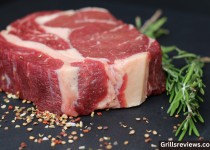
Can You Eat Raw Steak? (How It Will Affect You If You Do)
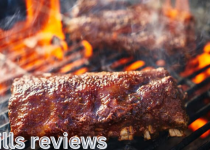
How To Cook Ribs On The Grill (5 Easy Steps)
